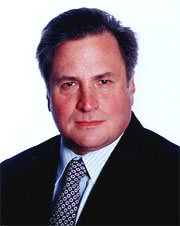 By Dick Morris November 10, 2004
A comparison of the increase in the Bush vote in the 36 states where the president and John Kerry did little advertising, and in the 14 states that they deluged with media, suggests that the ads made little or no difference in the vote of either candidate. In the states which the campaigns did not contest and assigned to one camp or the other, Bush's vote rose by 2.9 percent over his showing against Al Gore in 2000. And in the states where the candidates spent advertising money like there was no tomorrow, Bush's vote share rose by 2.6 percent. So all the Kerry and Bush ads - costing well over $1 billion - affected, at most, three-tenths of 1 percent of the vote. Nor did candidate visits matter much. Bush's vote rose nationally by about the same amount that it increased in states where he and Kerry campaigned their hearts out as in states that the candidates hardly ever visited. The lesson is that presidential campaigns remain national races and that all the efforts to skew the election one way or another in swing states by concentrating attention on them makes little or no difference. The avalanche of national news coverage, the nationally televised party conventions and the candidate debates remain the dominant factors in influencing voters. Money just doesn't matter that much in a presidential race. Obviously, there would be influence anywhere only one side advertised or campaigned. But with both campaigns running at top speed and both candidates visiting every day-care center in Ohio, the sum total of their expenditures and exertions was mutually offsetting and, ultimately, insignificant. In past presidential contests, it has been hard to measure the impact of paid advertising and candidate visits because it was all spread across the entire nation. But the virtual-tie 2000 contest spawned a focus on swing states that dwarfed anything in past years. Neither Bush nor Kerry bought any significant amount of broadcast-network advertising; both saturated media markets in swing states. To a similarly unprecedented degree, the schedules of the candidates and their surrogates focused on states that they felt were up for grabs. But it made no difference! In local elections for senator, governor, Congress or dog catcher, TV advertising is usually decisive. But the saturation media coverage of a presidential race largely tends to drown out the advertising and to muffle or nullify its effect. In 1995-1996, the Clinton campaign
was able to increase the president's approval rating and vote
share in swing states much more significantly than in the rest
of the country by local paid advertising. But the key then was
to do the advertising a year and a half in advance of Election
Day, when the other side wasn't advertising, so the paid media
could cut through without being overwhelmed by the clutter of
other political media and the crush of national pre-election
news coverage. Dick Morris at dmredding@aol.com Dick Morris was an adviser to Bill Clinton for 20 years. Look for his new book, "Because He Could" about Bill Clinton. All Rights Reserved. Distributed exclusively by Cagle, Inc. www.caglecartoons.com to subscribers for publication.
|
||
